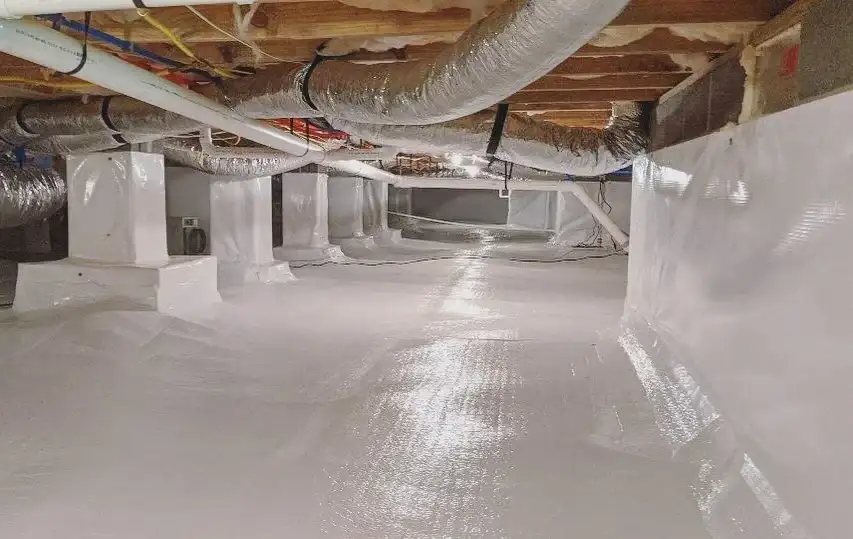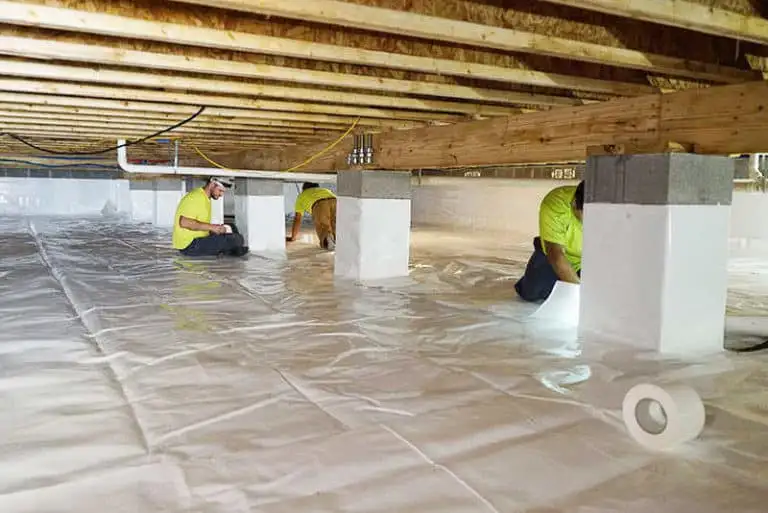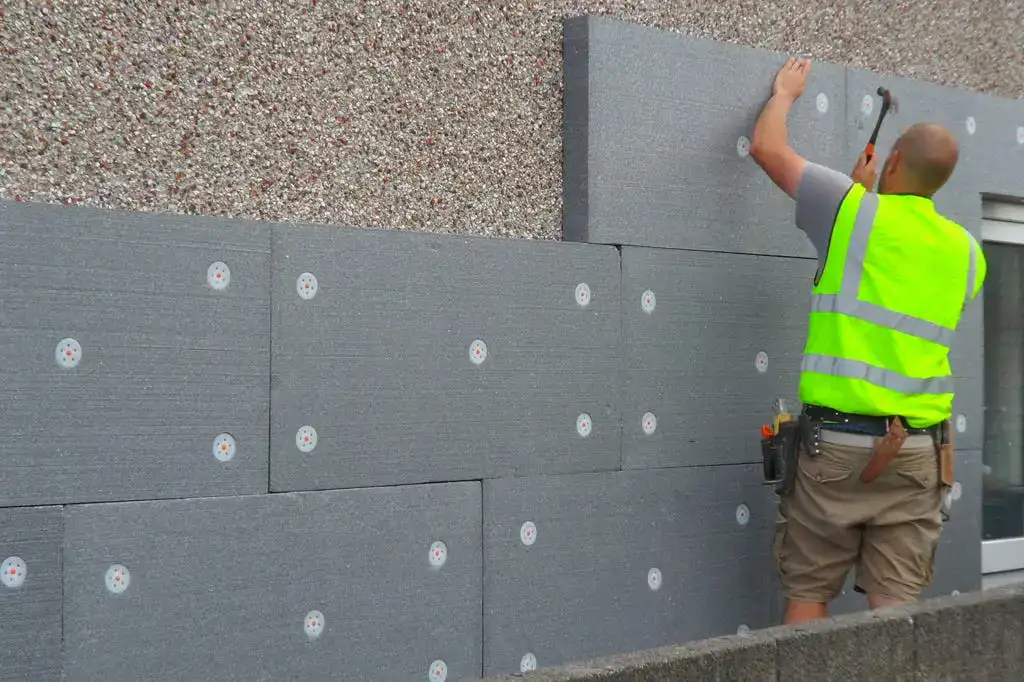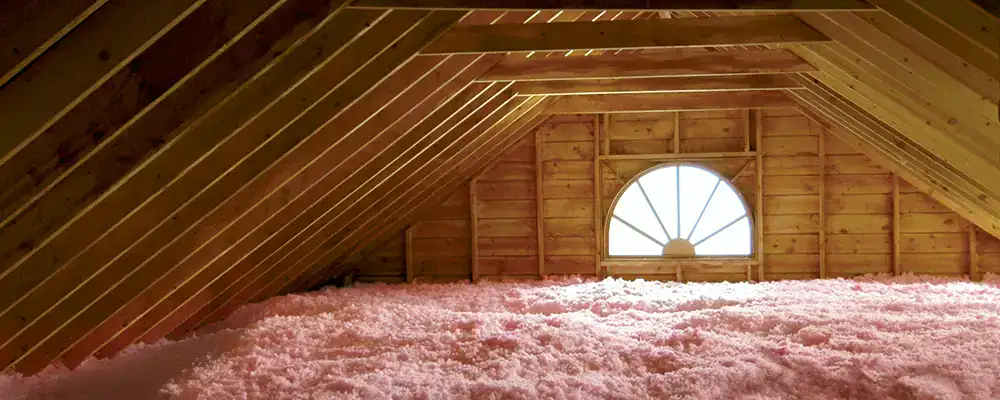Crawl space insulation cost is the price of insulation that goes under the house, for warm floors, as well as lower energy bills, all while being dependent on size, materials, and labor.
What if you can save your monthly bill? Why not insulate your crawlspace so that your home becomes warmer and more energy efficient? That is worth investing in for comfort and pleasure.
From $300 to about $10,000, the cost ranges from keeping 800 sq. ft. close to the average rate of $2,000 into consideration. Prices will also depend on materials, which may include spray foam or batt insulation.
Cost to Insulate a Crawl Space
Crawl Space Insulation |
Costs |
| National Average | $2,000 |
| Average Range | $500-$6,000 |
| Low-end | $300 |
| High-end | $10,000 |
Crawl Space Insulation Cost per Square Foot

Crawl space insulation is typically priced per square foot to simplify estimating material and labor costs. The size of the crawl space depends on the house’s overall dimensions and layout. On average, insulating a crawl space costs between $1 and $5 per square foot, with total expenses varying based on the specific area.
Size (sq.ft.) |
Cost (Installed) |
| 300 sq.ft. | $300 – $1,500 |
| 500 sq.ft. | $500 – $2,500 |
| 800 sq.ft. | $800 – $4,000 |
| 1,000 sq.ft. | $1,000 – $5,000 |
| 1,200 sq.ft. | $1,200 – $6,000 |
| 1,500 sq.ft. | $1,500 – $7,500 |
| 2,000 sq.ft. | $2,000 – $10,000 |
| 2,500 sq.ft. | $2,500 – $12,500 |
Average Cost of Crawl Space Insulation by Type
Costs for crawl space insulation will vary with the type of insulation selected. Most likely, contractors will recommend using batt or spray foam, or foam boards, depending on your particular property and climate.
Every substance has its unique merits. You may go with batt insulation as it is inexpensive, on the other hand, spray foam offers superior moisture control to the other. A professional will lead you towards achieving the most efficient and protected kind for your space.
Type of Insulation |
Cost per Sq.Ft. (Installed) |
| Batt | $1 – $2 |
| Roll | $1 – $2 |
| Foam Board | $1 – $4 |
| Spray Foam | $2 – $5 |
Crawl Space Batt Insulation
Batt insulation is very inexpensively sold at a price ranging from $1 to $2 per square foot for crawl spaces. Panels are either of fiberglass or mineral wool and are invariably offered with front and back paper or foil. It’s one of the most affordable options depending on the climate, but having less R-value makes it a less suitable option for places where insulation and maintaining temperatures aren’t critical.
Crawl Space Foam Board Insulation
For crawl spaces, rigid foams or foam boards for insulation can be found for about $1-$4 per square foot. They are made from expanded or extruded polystyrene or polyisocyanurate material. It has a very high R-value, which acts against thermal bridging, air leakage, and moisture control, making it ideal for crawl space ceiling and floor insulation.
Crawl Space Spray Foam Insulation
The cost of spray foam insulation for crawl space ranges between $2 and $5 a square foot. Closed-cell spray foam is superior, offering an airtight seal and moisture barrier, at a cost above open-cell foam. In addition to providing the highest thermal R-value, closed cell contributes structural strength to walls and maintains that value through time, making it an excellent solution for long-term performance.
Crawl Space Insulation Price by Material
Choosing the proper insulating material for crawl spaces is important to have both efficiency and performance. Standard insulating materials like fiberglass and Rockwool usually do not provide moisture control or air barriers as well as foam-based materials. To create better thermal performance, a combination of batt insulation and foam boards or spray foam provides optimum results.
Cork and wood fiber are also strong insulating materials, as well as very moisture-protective. The following chart shows the different types of crawl space insulation, their applications, and the average costs per square foot:
Material |
Application Type |
Costs per Sq.Ft. (Materials Only) |
| Fiberglass | Batts | $0.40 – $1.50 |
| Polystyrene | Foam board and spray foam | $0.60 – $2.30 |
| Denim / Blue Jean | Batts | $1.15 – $1.75 |
| Rockwool (Mineral Wool) | Batts | $1.40 – $4 |
| Sheep Wool (Real Wool) | Batts | $1.50 – $2.80 |
| Polyisocyanurate | Foam board | $2 – $4.50 |
| Cork | Rigid board | $3 – $12 |
| Wood Fiber | Rigid board | $4.25 – $6.75 |
Labor Cost to Install Insulation in a Crawl Space

Expert insulation contractors will take care of the entire crawl space insulation from inspection all through to installation. Start with crawl space assessment: Find out how it is designed and sized for them to compute the cost charged per square foot. Only one or two workers are needed since the crawl space is small.
Crawl space insulation labor costs vary between $0.25 and $2.50 per square foot. Jointly with material costs, this means everything added up comes to $1 to $5 for the whole job.
Sometimes, professionals may charge within the confines of $40 to $60 per hour; for the most part, however, it is calculated using the square footage. Price generally includes the quote, inspection, prep work, cleanup, and possibly a lifetime warranty plus help in securing energy rebates.
Cost to Replace Insulation in a Crawl Space
Replacing insulation in crawl spaces usually ranges between $1,000-$3,500 in an area of about 800 sq. ft. The price covers the removal of the old insulation along with the installation of new materials. You may decide on the same kind of insulation to have better options for a longer time.
Crawl space insulation should be replaced when floors feel cold or there is water damage or pests. Other signs are high energy bills or frozen pipes. An expert can help determine if you need insulation replacement to have adequate heating in your home to make it more comfortable and safer.
Crawlspace Insulation Removal
Generally, it’s recommended to remove prior crawlspace insulation before installing new insulation for enhanced energy efficiency. While it’s not obligatory, it always lowers energy costs and enables avoidance of cold floors above. Removal costs constant from $300-$1,000 for contestant insulation categories and the crawlspace area size.
Maintenance
General homeowners manage basic crawl space maintenance, such as floor sweeping and cleaning, improving air quality comfort. The professional way is by inspecting and recommending a solution for insulation or encapsulation to avoid damage. Various issues are identified by experienced contractors, such as problems related to wiring, plumbing, ventilation, or cracks in the foundation. Such problems include mold, mildew, pests, and moisture; they will recommend insulation or encapsulation to invulnerable the crawl space.
Pros and Cons of Crawl Space Insulation
Pros:
- Lower Energy Costs: From the insulation high R-value closed cell, the walls constructed are able to maintain that comfortable temperature which gives reduced energy consumption.
- Reduced Cold Drafts: Prevents loss of cold particles through the baseboards as it protects against burst pipes the freezing temperature.
- Moisture Control: Closed-cell spray foam also acts as a moisture barrier, helping to prevent mold growth and achieving a fairly low humidity level in the crawl space.
Cons:
- Cost: To insulate your crawl space, you need to shell out as much as $500 up to $6,000, which for most minds, will take planning and budgeting.
- Effectiveness for Small Leaks: Insulation is much to cover small leaks, but considerable water damage or significant leaks may require extra measures such as vapor barriers.
Crawl Space vs Insulation Price
One can use insulation or encapsulation to improve crawl space energy efficiency. Insulation assists in keeping the area warm and free of excessive moisture. Thus making heating and cooling costs lower from reducing the intake of airflow within the space. It creates a barrier to inside vs. outside, thus protecting pipes and moisture buildup around the foundation.
Project |
Cost |
| Insulation | $500 – $6,000 |
| Crawl Space | $2,000 – $8,000 |
Additional Considerations and Costs
License and Insurance: Be sure that the installer holds applicable licenses and insurance for safety and professionalism.
Permits: Contractors must comply with local building laws and must obtain relevant permits from local authorities for insulation work.
DIY: When the crawl space is cramped, you shouldn’t attempt the insulation yourself; only experienced professionals know how to handle such situations.
Prep-work: Professionals will clean the area and check for water or structural damage before installation.
Warranty: Inquire about warranties, as many companies provide lifetime warranties for crawl space insulation.
New vs Existing Construction: Installation works best in new homes and is cheaper to cost, while older homes may have to be uncomfortably interfered with due to already existing materials.
Vented vs Sealed Crawlspaces: Sealed crawlspaces usually are more energy efficient because there is better control with moisture issues and less cost for insulation.
Location: The amount of insulation you need to fit will determine what total amount. Insulate the entire crawl space or just specific areas: walls or subfloor.
Air Leaks: It is also important to seal air leaks for energy efficiency and to ensure that your installer recommends the proper insulation for your environment.
Thickness: This kind of insulation comes in many thicknesses of spray foam. The greater R-value (21 or more) provides a greater size but with a higher price tag.
Faced vs Unfaced: Faced insulation has an augmented vapor barrier, giving special protection against moisture, but is a little bit pricier when compared to unfaced insulation.
Climate: The level of insulation for recommended insulation in the U.S. is R-19, lower levels may include R-13 or R-15, which are referred to as milder climates.
Repair: Repair or replace damaged or sagging insulation to keep moisture and energy efficient. Replacement is generally more effective and often less expensive.
FAQS
Q1. What is the best way to insulate a crawl space with a dirt floor?
Combining rock wool or fiberglass with spray foam is ideal. This improves venting, air quality, and energy efficiency.
Q2. Is insulating the crawl space worth it?
Yes, it enhances energy efficiency, and air quality, and reduces energy costs.
Q3. What is the best insulation for a crawl space?
Rigid foam insulation board and spray foam are highly recommended for their high R-value and strong moisture protection.
Q4. How Long Does Crawl Space Insulation Last?
Properly installed insulation can last for several decades, but it may need to be inspected and maintained periodically.
Q5. How much does it cost to insulate underneath the house?
It ranges from $500 to $6,000, with an average cost of $2,000 for an 800 sq.ft. space using spray foam insulation.


